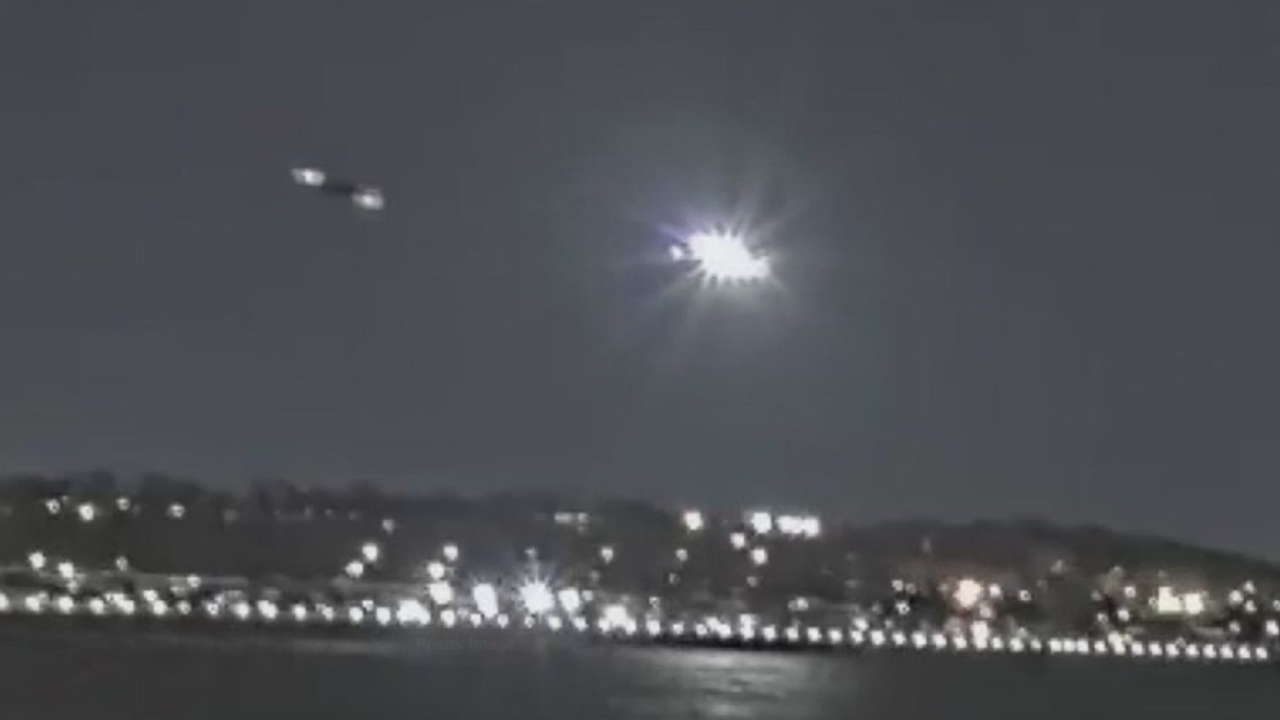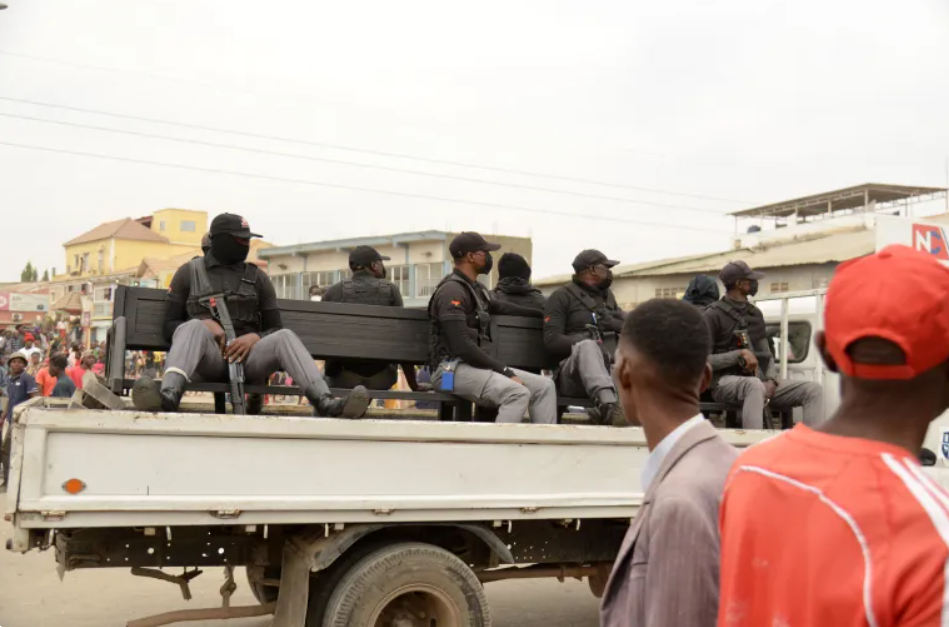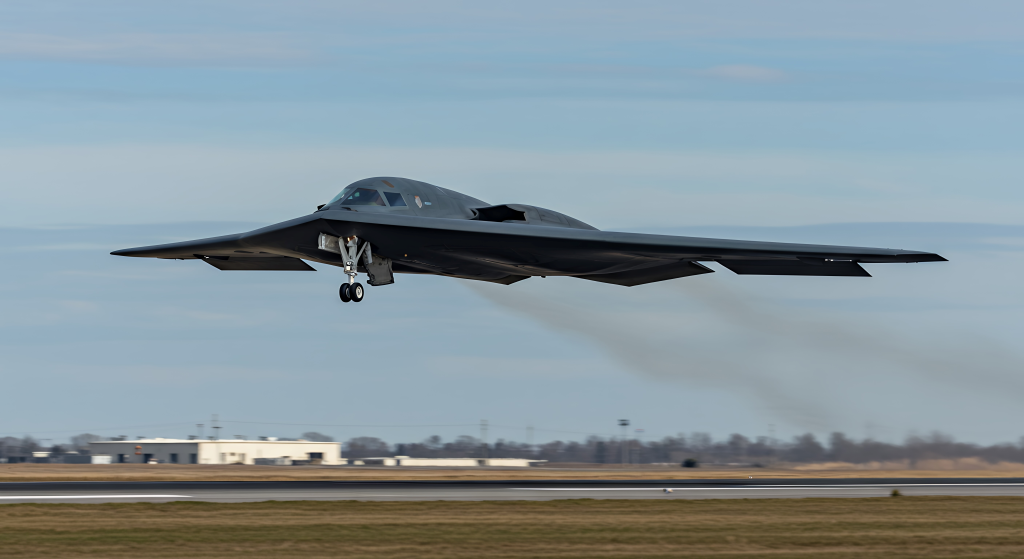From the First Gulf War until present, we have witnessed what seems like perpetual war in the Middle East and West Asia. The rapid escalation of conflict across the greater Middle East, from Syria to India, since the October 7, 2023, massacre in Israel by Hamas-controlled Palestinian forces has set the stage for widespread and largely undeclared war.
Nothing speaks to the ambiguity of this state of war better than the fact that United States President Donald Trump on June 16 demanded the unconditional surrender of the Iranian theocratic regime, without a formal state of war having been declared by Iran, Israel, or the U.S.
Over the last year, while Israel has been at war with Hamas and Hezbollah in Gaza, Lebanon, and Syria, the United States navy has seen a level of engagement with Yemen’s Houthis in the Red Sea that it has not experienced since WWII.
Iran, through its infamous Islamic Republican Guard Corps (IRGC), has regionally defined proxy warfare through its extensive funding and training of these three militant-terrorist groups across much of the Middle East over the past 25 years.
Historically, terrorist groups have not had at their disposal hundreds to thousands of ballistic missiles and advanced anti-aircraft missiles.
It is estimated that Iran-supplied Hezbollah had more than 100,000 short to medium range ballistic missiles before Israel began to aggressively target them after October 7, 2023, through thousands of airstrikes, ground force incursions, and assassinations of high-ranking Hezbollah officers.
These proxies of the IRGC have allowed it to wage war without actually declaring war, while achieving capabilities historically only seen by state actors.
These groups include Hezbollah (Lebanon), Hamas (Gaza Strip), Palestinian Islamic Jihad (Gaza Strip and West Bank), Houthis (Yemen), Kata’ib Hezbollah (Iraq), Asa’ib Ahl al-Haq (Iraq), Harakat al-Nujaba (Iraq), Badr Organization (Iraq), Fatemiyoun Division (Afghanistan), and Zainabiyoun Brigade (Pakistan).
In this article, I delve into the nuances of Iran’s nuclear program. First, a quick summary of the recent history of the growing conflict between Israel and Iran.
Following the 1979 Iranian Revolution, Iran adopted a hostile stance toward Israel, initiating a proxy war by supporting Lebanese Shia and Palestinian militants during the 1982 Lebanon War. Iran’s influence grew through its well-funded “Axis of Resistance”, consisting of allied Islamist groups.
Tensions escalated over Israel’s efforts to curb Iran’s nuclear program and increasing clashes during the Syrian civil war.
On October 7, 2023, Hamas, partially funded by Iran, attacked Israel, killing nearly 1,200, mostly civilians, sparking the Gaza war.
Israel intensified strikes on Iranian and proxy forces in Syria, including the December 25, 2023, assassination of Iranian commander Razi Mousavi, and on January 20, 2024, Israeli airstrikes in Damascus killed Iranian general Sadegh Omidzadeh and four others.
On April 1, 2024, Israel bombed Iran’s embassy in Damascus, killing 16, including Quds Force commander Mohammad Reza Zahedi.
Iran vowed retaliation, and on April 13, the IRGC seized the MSC Aries ship, linked to an Israeli firm, in the Hormuz Strait. That night, Iran and proxies launched 300 drones and missiles at Israel, causing minor damage to Nevatim Airbase.
The U.S., UK, and Jordan intercepted over 100 drones. Israel retaliated on April 19, striking near Isfahan’s airport, targeting a radar for the Natanz nuclear site.
Both sides downplayed the strikes, signaling de-escalation.
On July 31, 2024, Israel assassinated Hezbollah commander Fuad Shukr in Beirut and Hamas leader Ismail Haniyeh in Tehran, prompting Iran and Hezbollah to pledge retaliation.
Tensions mounted through August and September, and the U.S. led diplomatic efforts to restrain Iran.
Israel escalated against Hezbollah, launching a bombing campaign in Lebanon on September 23, killing over 700, and assassinating Hezbollah leader Hassan Nasrallah on September 27, alongside IRGC deputy Abbas Nilforoushan.
On October 1, 2024, Iran launched 200 ballistic missiles at Israel, citing the assassinations as justification for the attack.
Israel responded on October 26 with air strikes near Tehran’s airport and other cities, targeting military sites.
By June 2025, the conflict intensified with Israel’s “Operation Rising Lion” on June 13, targeting Iranian military and nuclear facilities, killing IRGC commander Hossein Salami, senior commander Amir Ali Hajizadeh, and others. The first wave of this attack included over 200 F-35I Adirs, F-15Is, and F-16Is, and utilized over 330 munitions, including precision-guided missiles and bombs such as the Rampage and Delilah.
Iran retaliated that evening, striking Israeli military bases and Tel Aviv.
These events unfolded amid faltering U.S.–Iran nuclear talks, excluding Israel.
With the undeclared war underway, and Israel and the United States threatening to kill Iranian Supreme Leader Ayatollah Ali Khamenei, the situation was rapidly devolving, with ample evidence emerging that American air forces were preparing to step in to aid Israel in crushing Iranian forces and their offensive capabilities, while defending against Iranian ballistic missile barrages.
As of June 18, around 780 Iranian ballistic missiles had been fired against Israel since Operation True Promise in April 2024 (Grok III). With best estimates suggesting that Iran had around 3,000 long-range ballistic missiles capable of reaching Israel before the broader rise in hostilities with Israel, it is clear that many missiles and launchers remain unaccounted for.
As of June 16, the Israeli Defense Force (IDF) claims it had already destroyed over one-third of Iran’s surface launch vehicles.
As Israel’s Iron Dome missile defense system rapidly approaches depletion of its longer range interceptors, such as the Arrow, the Israeli air force will face higher pressure to destroy remaining Iranian ground launchers and will begin to rely increasingly on American anti-ballistic missile systems operating in the Middle East.
As of June 20, daily Iranian ballistic missile launches into Israel had dropped into single digits, implying the remaining launchers are too few in number to matter, or have gone into hiding.
With that high-level summary of the state of war between Israel and Iran, let us move onto the narrative of Iran’s uranium-235 enrichment efforts and whether these efforts are indeed a part of peaceful applications of nuclear energy (e.g., power generation, medical isotopes).
Prior to the Iranian Revolution in 1979, the West was in favor of Iran becoming a Tier I nuclear nation, and there were plans underway to build upwards of two dozen nuclear reactors by the 1990s to reduce reliance on domestic natural gas and to reserve this commodity for export revenues.
However, this abruptly changed following the formation of the Islamic Republic of Iran.
Iran’s uranium-235 enrichment program renewed in the 1980s, building upon the infrastructure and the domestic expertise of the West. Initially, the motive was stated to be for nuclear power and geopolitical leverage, but proliferation concerns were raised due to secretive activities.
The Islamic Republic sought alternative international expertise in Pakistan and China after the West revoked their agreements and technology-transfer agreements.
By 2002, undeclared facilities at Natanz and Arak were revealed, prompting International Atomic Energy Agency (IAEA) scrutiny. Natanz, Iran’s primary enrichment site, houses underground and above-ground centrifuge cascades, enriching uranium to 60% U-235 by 2025.
Natanz is the primary uranium-235 enrichment facility of Iran’s nuclear program and contains significant above-ground infrastructure. According to the Bulletin of Atomic Scientists, claims by the Israel Defense Forces (IDF) that the Natanz facility had been significantly downgraded by numerous air strikes were verified. According to the IAEA, the 15,000 centrifuges used at Natanz to enrich uranium-235, were destroyed in the early stages of Operation Rising Lion.
Figure 1 – Enrichment of uranium-235 isotopes from natural uranium, a highly capital- and energy-intensive process.
Figure 1 shows that nuclear reactors used in civilian power generation, typically consume enriched uranium containing a mere 3-5% uranium-235 isotopes. To produce fuel for smaller research reactors or small modular reactors, and for weapons, it requires significantly higher processing effort.
Typically, civilian applications of enriched uranium fuel, stops the centrifugal process at 3-5% levels, as it would be cost prohibitive and illogical to enrich to 60% and then dilute back to low-enrichment levels used in civilian reactors.
The fact that the international community is reporting that Iran has been enriching to 60% levels, stands in contradiction to their repeated claims that their efforts are for peaceful applications only.
Figure 2 – Arak heavy water reactor and production facility.
Arak (Figure 2) is a 40-MW thermal heavy water reactor, similar to Canada’s CANDU reactor technology that uses natural uranium fuel and has historically been used as a rudimentary method of generating fissile plutonium-239. Recall that India used its Canadian CANDU technology to produce the plutonium for its first nuclear weapons back in the 1960s.
According to the IAEA, Arak is capable of producing sufficient quantities of plutonium to create 1 to 2 nuclear weapons per year.
Fordow, a highly fortified underground enrichment facility, reportedly resumed 60%-plus enrichment post-2019, using more advanced IR-6 centrifuges versus the IR-1/IR-2 devices at Natanz. The 2015 Joint Comprehensive Plan of Action (JCPOA) briefly curbed enrichment, but after the U.S. withdrawal in 2018, Iran expanded its stockpile, reaching 408 kg of 60% enriched uranium by May 2025, enough for nine nuclear weapons if further enriched.
According to the Institute for Science and International Security, Fordow’s IR-6 centrifuges are well suited to further enrich 60% uranium-235 produced at Natanz – up to 90% – which is typically considered to be weapons grade.
The fact that Fordow is built under a small mountain, adds further credence that its purpose is motivated by military applications, and that its architects fully expected its existence to invite foreign military intervention.
Currently, only the United States Air Force is known to possess a bunker-busting bomb (Figure 3) thought capable of penetrating Fordow’s fortifications.
Figure 3 – United States B-2 Spirit Bomber deploying 12-tonne GBU-57A/B massive ordnance penetrator (MOP) bomb (aka bunker-buster ordnance).
IAEA audits consistently noted non-compliance, including unreported nuclear material at sites such as Lavisan-Shian and Turquzabad, and Iran’s 2024 withdrawal of inspector designations, hindering verification.
By June 2025, the IAEA declared Iran non-compliant for the first time in 20 years, citing a lack of co-operation and an enriched uranium stockpile far exceeding civilian needs.
This latter point is especially relevant, given its only small reactor (e.g., Arak) is heavy water moderated, and thus does not require enriched uranium fuel.
These collective public sources challenge the Islamic Republic of Iran’s claims that its nuclear program is intended strictly for civilian use.
These factors, together with other intelligence sources that are top secret, served as the basis for the U.S.-backed IDF invasion of Iran on June 13, targeting Natanz and other nuclear-military sites.
On June 21, 2025, the United States executed a historic airstrike operation targeting three key Iranian nuclear facilities – Fordow, Natanz, and Isfahan.
President Donald Trump announced the strikes, claiming they “completely and totally obliterated” Iran’s uranium enrichment capabilities, though the extent of the damage remains unverified by independent sources.
The U.S. intervention followed failed diplomatic efforts, including an 11th-hour collapsed backchannel meeting brokered by Turkey.
The operation involved six B-2 Spirit stealth bombers from Whiteman Air Force Base, Missouri, deploying a dozen 30,000-pound GBU-57A/B massive ordnance penetrator (MOP) bombs, known as “bunker busters,” primarily targeting the Fordow facility.
Additionally, U.S. Navy submarines fired 30 Tomahawk land-attack missiles at Natanz and Isfahan, with one B-2 dropping two MOPs on Natanz. Isfahan, a critical site believed to house near-bomb-grade uranium, was described as the most operationally complex target due to its fortified underground structure.
Trump announced the strikes on Truth Social Saturday evening, stating all planes were safely out of Iranian airspace and emphasizing the operation’s success. In a White House address, flanked by Vice President JD Vance, Defense Secretary Pete Hegseth, and Secretary of State Marco Rubio, Trump warned Iran of further strikes if it did not pursue peace, citing remaining targets.
The world now waits on bated breath to see if the Islamic Republic of Iran will surrender or follow through with its promised retaliation against American targets, both regionally and internationally.
Will history show that the Americans learned from its paralysis over North Korea’s early nuclear ambitions and preemptively eliminated an emerging rogue nuclear threat, thus bringing to the Middle East a new era of relative peace? Alternatively, will the situation escalate beyond the already dire situation throughout the region?
The United States and Israel have effectively broken the Iranian-led/funded Axis of Resistance in the Middle East and has so far done so with minimal deployment of ground forces.
Likewise, the use of United States B-2 stealth bombers in effectively finishing off Iran’s uranium enrichment facilities has demonstrated to Russia and to China that it is willing to act against their closest allies in furthering state interests in the Middle East.












